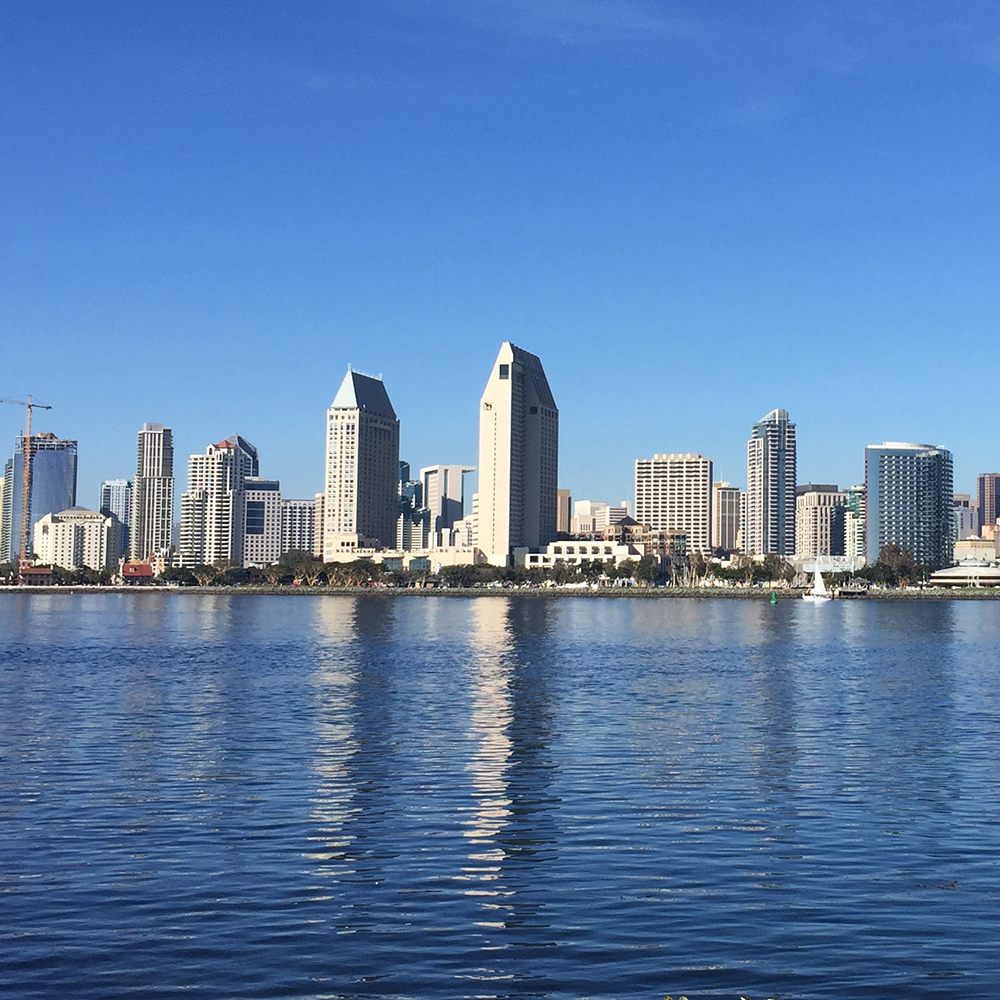According to Neighborhood Scout, a data-driven organization that provides detailed insights into local crime rates at a far more granular level than national statistics, San Diego has 4 violent crimes and 19.3 property crimes per 1,000 residents. In contrast, Los Angeles has 8.4 violent crimes and 24.6 property crimes per 1,000 residents, while San Francisco has 7.4 violent crimes and a whopping 49 property crimes per 1,000 residents.
These numbers paint a clear picture: San Diego’s downtown has recovered not just because of its emphasis on promoting downtown as a live-work-play hub but also because of its focus on maintaining a safe environment for residents and visitors alike.
While the downtown areas of Los Angeles and San Francisco were heavily reliant on office workers coming in for the 9-5 grind, COVID-19 lockdowns left them as ghost towns. Regrettably, these cities responded to the crisis by refusing to enforce the law, allowing crime and human depravity to fester unchecked. Understandably, few people are eager to return to work or even open a business in a place where theft, vandalism, harassment and worse go unpunished.
Amidst the chaos, San Diego’s mayor, Todd Gloria, stands out as a relative beacon of hope. Despite criticism, Gloria is arguably the least incompetent big-city mayor in California. He has recently championed safety-minded initiatives, including backing a (sadly) failed state bill to strengthen sentencing for fentanyl dealers and introducing a city measure to ban public camping when shelter options are available.
Gloria’s leadership, rooted in the desires of local residents rather than the opinions of over-educated pundits, has boosted San Diego’s reputation as a city where people want to vacation, work, and raise their families. What can Los Angeles and San Francisco learn from San Diego’s success? The answer is twofold: prioritize safety and embrace downtown housing deregulation.
First, these cities must recommit to law enforcement and protect their residents and visitors from the deranged and drug addicted. A city cannot thrive if its streets are riddled with crime, and public safety should be non-negotiable.
Second, as remote and hybrid work reduce the need for commercial office space, cities should look to the San Diego model of deregulating housing development in their downtown cores. By eliminating height limits, parking minimums and “inclusionary zoning,” these once-empty downtown areas can be transformed into thriving communities of full-time residents who will hold city officials accountable for maintaining safety and improving essential public services, such as schools and public transit.
“Inclusionary zoning,” a policy that requires a certain percentage of new housing units to be set aside as affordable housing, stifles housing construction by making developments unaffordable to build. As a result of these overly prescriptive zoning policies, the supply of new housing fails to keep up with demand, driving up prices and exacerbating the affordability crisis. By reducing or eliminating inclusionary zoning requirements, cities can create a more welcoming environment for developers, spurring the construction of additional housing units that can help alleviate the affordability problem by focusing on growing the housing supply, not subsidizing a lucky few at the cost of higher rent for everyone else.
Downtown parking minimums – regulations that require developers to provide a certain number of parking spaces for each housing unit – have a similarly disastrous effect on housing construction and affordability. By mandating a set number of parking spaces, these regulations increase the cost of construction, as developers must allocate valuable land and resources to accommodate parking.
Underground parking, the tool downtown developers must use to reach parking minimums, costs a whopping $80,000 per space in California and is one of the largest costs developers face. Eliminating or reducing parking minimums dramatically lowers costs for developers, allowing them to build more housing units and devote more space to other essential amenities, allowing for lower rents.
Downtown height limits, meanwhile, cap the maximum height of buildings within a designated area, effectively limiting the number of housing units that can be built. These restrictions not only reduce housing supply but also discourage the development of population densities that foster the creation of the lively cultural and social amenities Americans want from their urban environments.
As California strives to recover and grow, it should take lessons from San Diego’s success. By adopting a pragmatic approach to crime and housing development, cities like Los Angeles and San Francisco can create a brighter future for their residents and, ultimately, for the entire state. It’s time for these cities to set aside harmful economic and safety politics and prioritize the well-being of their citizens above the screeches of a vocal activist minority.
The San Diego model offers a clear roadmap to a brighter future, and it’s up to leaders in our state’s other leading cities to restore their downtowns by discarding outdated zoning regulations, such as inclusionary zoning, parking minimums and height limits in these areas. Coupled with a strong, visible commitment to public safety, these reforms will create thriving downtowns that are more attractive to residents, businesses and tourists alike.
Kenneth Schrupp is a Young Voices contributor writing on the intersection of business, politics and media. He’s a public affairs consultant and serves as editor in chief of the California Review, an independent political journal.

